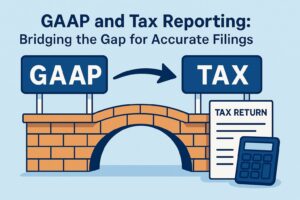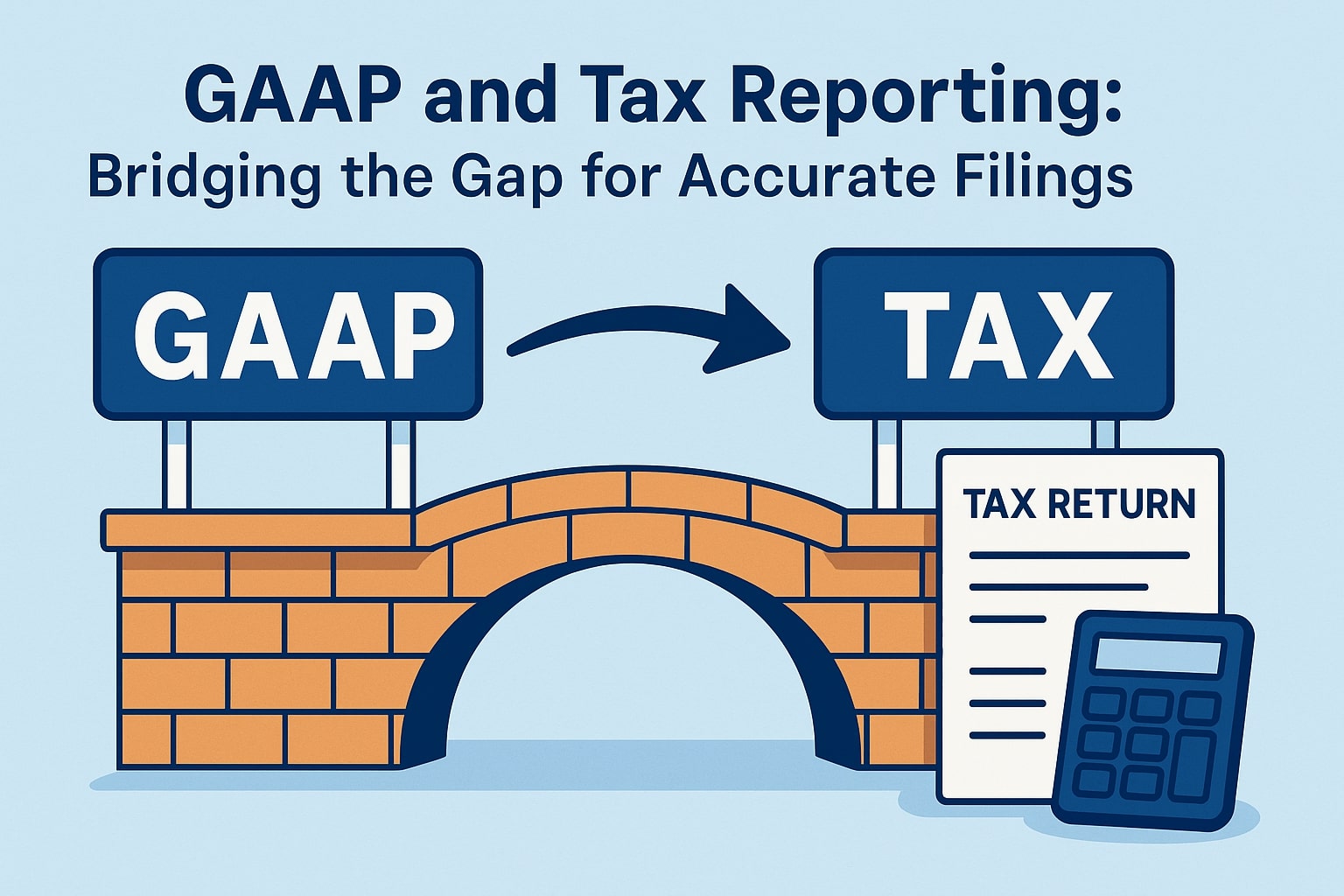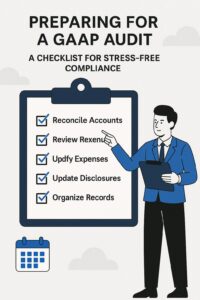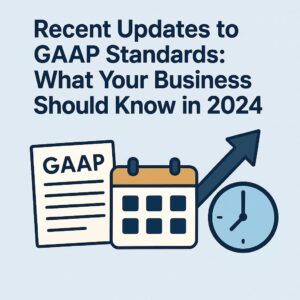Article 9: “GAAP and Tax Reporting: Bridging the Gap for Accurate Filings”
(Meta Description: Learn how to reconcile GAAP financials with IRS tax rules, manage deferred taxes, and avoid common pitfalls in this step-by-step guide.)

GAAP and Tax Reporting: Bridging the Gap for Accurate Filings
GAAP and tax reporting serve different masters—investors and the IRS. These differences create “book-tax gaps” that can confuse small businesses. In this article, we’ll explain why these gaps occur, how to reconcile them, and best practices for accurate filings.
Key Differences Between GAAP and Tax Reporting
Area
GAAP
Tax Reporting (IRS)
Depreciation
Straight-line or accelerated
MACRS (accelerated)
Bad Debt Expenses
Allowance method (estimates)
Direct write-off (only when uncollectible)
Meals/Entertainment
50% deductible
50% deductible (GAAP) but IRS may limit
5 Common Book-Tax Differences (and How to Adjust)
Depreciation
GAAP: $10,000/year (straight-line).
IRS: $15,000 (MACRS Year 1).
Adjustment: Subtract $5,000 on tax forms.
Accrued Expenses
GAAP: Record $5,000 bonus in December.
IRS: Deduct in January when paid.
Adjustment: Add $5,000 to taxable income.
Bad Debts
GAAP: $2,000 allowance.
IRS: $0 deduction until debt is written off.
Inventory
GAAP: FIFO/LIFO.
IRS: Prohibits LIFO for tax purposes.
Tax Credits
GAAP: Recognized when earned.
IRS: Recognized when claimed.
How to Reconcile GAAP and Tax Reports
Track Temporary vs. Permanent Differences:
Temporary: Timing gaps (e.g., depreciation).
Permanent: Non-deductible items (e.g., fines).
Use Deferred Tax Accounting:
Record deferred tax assets/liabilities for temporary differences.
File Form 1120 (Corporations):
Attach Schedule M-3 to explain book-tax differences.
Tools to Simplify Reconciliation
QuickBooks Tax Hub: Tracks book-tax differences automatically.
Thomson Reuters UltraTax: Generates M-1/M-3 schedules.
FAQs
Q: Can I use GAAP for my tax return?
A: No—tax filings follow IRS rules. Reconciling both is mandatory.
Q: What’s a deferred tax liability?
A: Taxes owed in the future due to temporary differences (e.g., accelerated depreciation).
Final Thoughts
Navigating GAAP and tax reporting requires careful reconciliation, but it’s manageable with the right tools and knowledge. By bridging these gaps, you’ll avoid penalties and present a cohesive financial story.
*(Word count: 1,400 | Keywords: GAAP vs. tax reporting, book-tax differences, IRS rules)*




